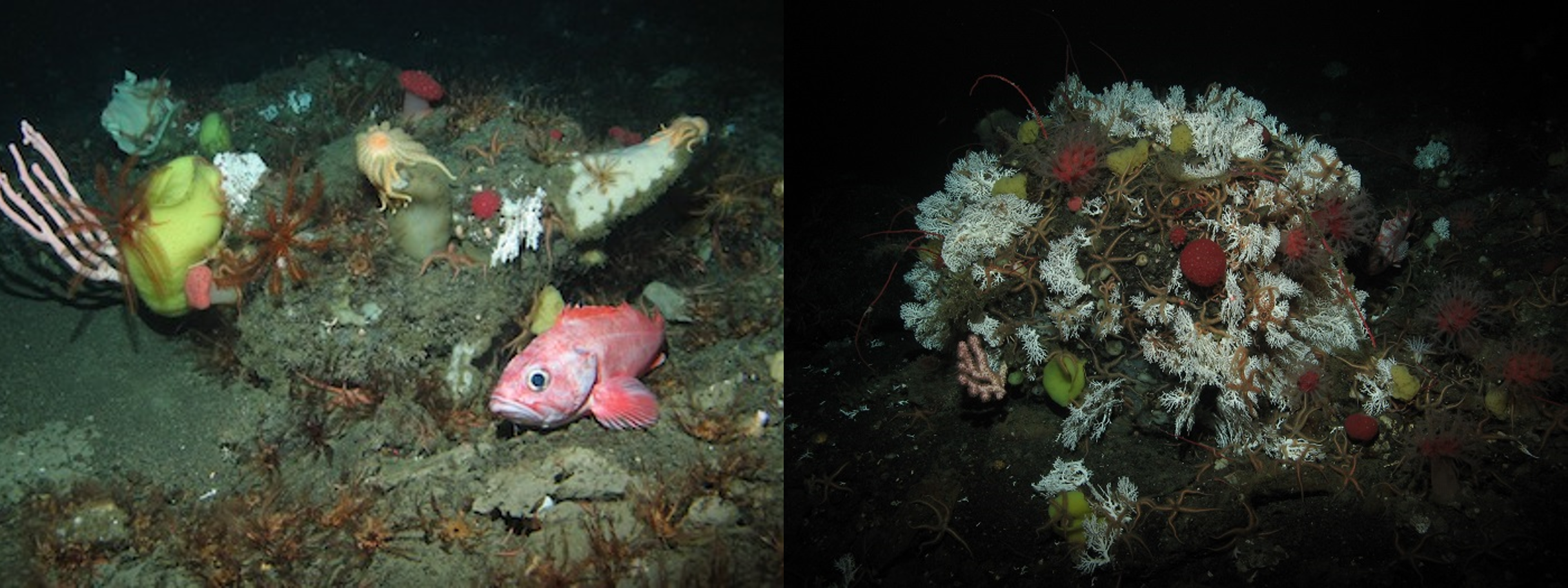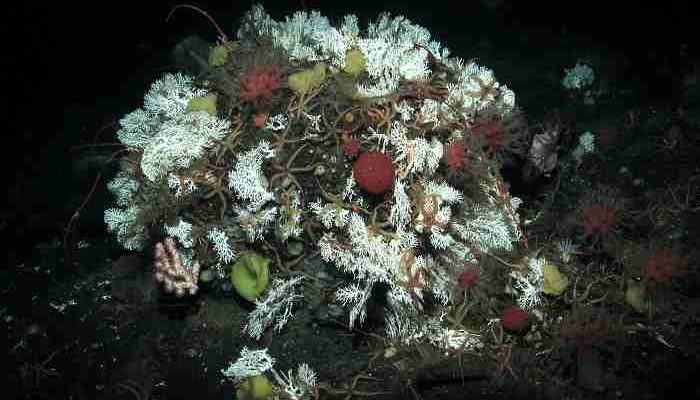[from Deep-Sea Life Vol 13]
Heather Coleman
National Oceanic and Atmospheric Administration
Contact: heather.coleman@noaa.gov
In 2018, the National Oceanic and Atmospheric Administration (NOAA) launched the West Coast Deep-Sea Coral Initiative, a four-year effort that aims to characterize and study deep-sea coral and sponge ecosystems offshore of California, Oregon, and Washington. The initiative is the latest regional research effort supported by NOAA’s Deep Sea Coral Research and Technology Program. The Initiative is led by a team from multiple NOAA offices, and works in close collaboration with federal partners and academic institutions.
Guided by its science plan, the Initiative supports multiple research expeditions each year designed to map, survey, and sample deep-sea coral ecosystems, focusing on areas where information is needed to support management decisions. The Initiative is focused on surveying (1) baseline conditions of essential fish habitat that has been closed to trawling for more than a decade and is scheduled to reopen soon, (2) areas of high deep-sea coral bycatch, and (3) seafloor within the five national marine sanctuaries along the west coast.
The West Coast Deep-Sea Coral Initiative is partnering closely with the Bureau of Ocean Energy Management and US Geological Survey on the EXpanding Pacific Research and Exploration of Submerged Systems (EXPRESS) campaign. This multiyear, multiplatform, multiagency effort has already begun characterizing areas of the deep seafloor that had never before been visited, and is providing valuable data for NOAA’s Blue Economy initiative. EXPRESS’s 2018 keystone expedition succeeded in adding new species and range extension records, collecting information to assess potential impacts of bottom trawling, validating predictive habitat models, and expanding use of advanced technology including autonomous underwater vehicles. In 2019, the Initiative is partnering with NOAA’s Office of Ocean Exploration and Research to characterize deep-sea communities in unexplored areas as well as to test new sensors, eDNA methods, and potentially telepresence technologies. Expeditions will also aim to collect organisms of high biopharma potential, describe habitat at possible offshore renewable energy sites, and investigate mineral resources in advance of potential industry interest.


